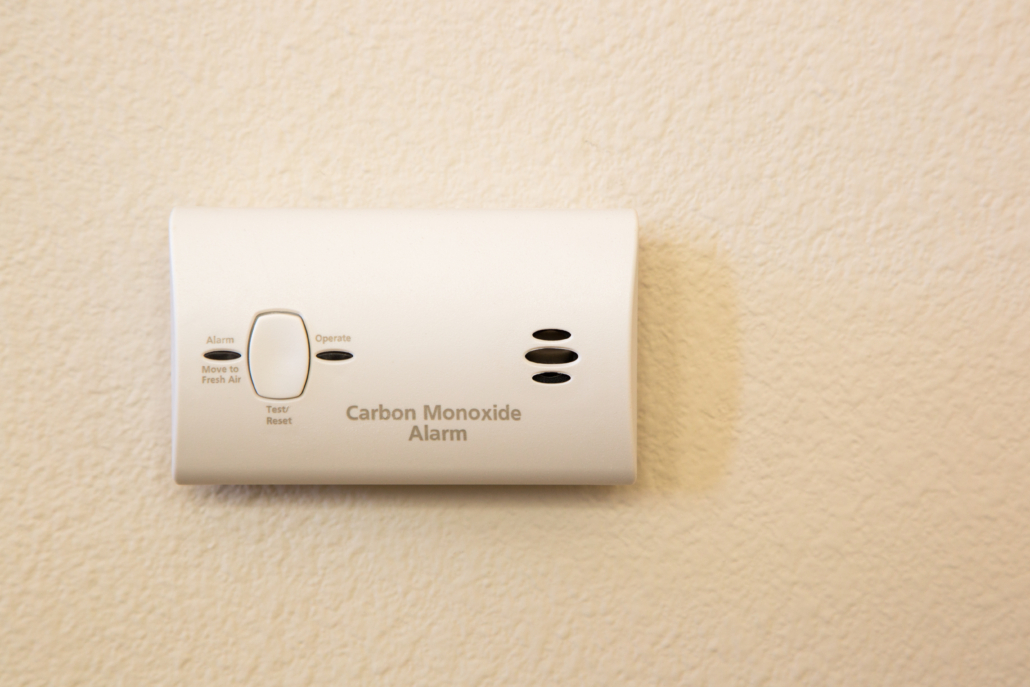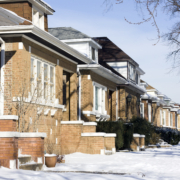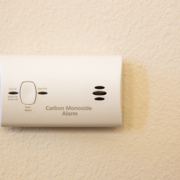Posts
What To Know About A Home Warranty
/in Owners /by Katie HowellHome warranties can help you save money on appliance repairs and maintenance of your home, but they may not be right for everyone. So, if you’ve just bought a home, and are debating whether a home warranty is right for you, here’s what you need to know.
The Difference Between Insurance & Warranties
You may think that you’re covered because you have home insurance, but a warranty is a separate entity. Homeowners insurance covers unforeseen damage to your home, specifically weather related incidences, while warranties cover things breaking down within your home, like the HVAC, kitchen appliances, garbage disposals, washers and dryers and more.
How It Works
Once you sign up for a home warranty, if something breaks down, you will submit a claim to your provider. From there, the provider will set you up with a repair company, who will contact you to set up an appointment. The repair or replacement will take place, and you will cover either the service fee or repair, whichever is less.
Benefits of A Home Warranty
A home warranty provides you with piece of mind, especially for those who don’t consider themselves handy. When something breaks, you know someone will be there to fix it for you. A home warranty can also help you stay on budget, as there are fewer unanticipated costs that may arise.
The Cons of A Home Warranty
Not everything is covered by a home warranty plan. For instance, a warranty won’t cover something that has not been properly maintained. Also, you pay up front for the cost of your plan each year. So, if a year goes by with no issues or repairs, you will still have to pay the price of the premium.
As always, discuss your best course of action with your REALTOR®. Find a Chicago REALTOR here.
The Ultimate Winter Maintenance To-Do List
/in Home Maintenance Checklists, Owners /by Katie HowellAs cold weather creeps in, it’s time to start looking at your winter maintenance to-do list. Use this list to start checking off your tasks to prepare for everything that comes with the wintry season.
Check for Drafts
Before Chicago temperatures drop consistently into the single and negative digits, save on your energy costs by addressing drafty entry points. You can save up to 20% each year, according to the U.S. Energy Department. Look for cracks in window caulking or doorway weatherstripping, which are two common causes of drafts.
Inspect Your Roof
Before the first snowfall, check for leaks in your roof! If you don’t know what to look for, a professional roof inspection can determine if there are any issues.
If you want to look for yourself, check for cracks or rust on flashing, warped shingles or build up of moss or lichen (which could mean decay below).
Clean Your Gutters
Clear debris from your gutters to avoid clogs which can lead to dangerous and damaging ice dams. Clogged gutters can cause expensive water damage! Follow these tips to clean your gutters.
Trim Tree Branches
Heavy snow can weigh down branches and even cause them to break off, and you don’t want them hitting and damaging your house! Make sure any limbs or branches around the outside of your home are at least three feet away.
Prep Your Pipes
Water expands when frozen, and if that water is in your pipes, it can cause them to burst. Avoid this by insulating pipes that run through unheated spaces like garages, crawl spaces, et cetera.
If the weather is expected to be particularly cold, consider setting your faucets to drip, which ensures water continues to move through the pipes and doesn’t grow stationary enough to freeze.
Check Smoke and Carbon Monoxide Detectors
Get in the habit of checking your smoke and carbon monoxide detectors once a season to see if their batteries need to be replaced. These are important safety guards!
In the end, winter maintenance doesn’t have to be intimidating! With planning and foresight, your home will be ready for whatever winter brings.
The Home Renovations That Will Bring You Joy – & ROI
/in Community, Owners /by Katie HowellWhether you’re doing a home renovation for your own pleasure, to update your space or to fix something that’s broken, home projects are always in demand. We’re breaking down the projects that bring the most joy to homeowners, and the ones that will make you the most money when you’re ready to sell.
Home Projects That Bring the Most Joy
Certain projects make you want to stay at home more, increase the enjoyment of your home or simply make a homeowner happy. According to the National Association of REALTORS® (NAR) and the National Association of the Remodeling Industry(NARI), these are the projects that bring the most joy for homeowners:
- Painting your home’s interior, either just a room or the entire home
- Adding a home office
- Refinishing hardwood floors
- Closet renovations
- Insulation upgrades
Renovations With the Highest Cost Recovery
When it comes to choosing a project for your home, there are some renovations that will have a bigger pay off in the long run compared to others. Here are the home renovations NAR and NARI say you will recover the cost of the project when selling your home.
- Refinishing Hardwood Floors
On average, this project costs about $3,400, and $5,000 is the estimated cost recovery, making it a 147% cost recovery. - New Wood Flooring
Typically, new wood floors cost $5,500, and $6,500 can be recovered, a 118% cost recovery. - Insulation Upgrade
On average, this project costs about $2,500, and $2,500 is the estimated cost recovery, making it a 100% cost recovery. - New Roofing
Typically, new roofing cost $12,000, and $12,000 can be recovered, a 100% cost recovery. - New Garage Door
Typically, a new garage door cost $2,000, and $2,000 can be recovered, a 100% cost recovery.
The Ultimate Spring Maintenance Checklist
/in Home Maintenance Checklists, Owners /by Katie HowellGoodbye freezing cold, hello spring! It’s time to start looking at your spring maintenance to-do list. Use this as a resource to start checking off tasks and getting ready for warmer albeit rainier weather.
Scan For Termites
Starting in March, termites become more prevalent. Keep an eye on any exterior wood of your home (porches and patios are common culprits). If you notice a hole with a winged insect the size of a rice grain flying out, that’s likely a termite. Call a pest control company as soon as possible!
Keep Mosquitos at Bay
Mosquitos can be pesky nuisances, but there is one straightforward trick to keep the hordes away from your home: get rid of any standing water. Mosquitos lay their eggs on stationary water! With no place to lay eggs, you’ll see less flying around your santuary.
Clean Your Screens & Windows
Temperatures aren’t too hot or too cold come springtime, so it’s a popular time of year to enjoy open windows. How are those windows looking? Clean filth off the screens and wipe the grime off the glass so you can enjoy as much sunshine as possible.
Clear Your Gutters
Now that the weather has thawed, rainstorms are on their way. Part of your spring maintenance checklist should include clearing leftover leaves and debris so there are no drainage issues when spring deluges truly open up.
Get Your Air Conditioner Serviced
Take care of your air conditioning units with regular service checks by scheduling a visit before the summer temperatures truly crank up. Plus, you’ll save money and stretch out the lifespan of the unit.
Check Smoke & Carbon Monoxide Detectors
Last, but certainly not least, get in the habit of checking your smoke and carbon monoxide detectors once a season to see if their batteries need to be replaced.
Cold Weather Tips for Safety and Prevention
/in Owners /by Katie HowellDuring the winter season, it’s important to be proactive in protecting your family and your home from the elements. Below are our tips to combat the cold weather and prevent larger issues in the future.
- Increase your thermostat’s temperature 2 to 3 degrees on extra cold days
- Leave cabinet doors open if pipes are inside
- Ensure all windows are fully closed and locked
- Use door sweeps to stop drafts
- Run faucets at a slow drip if temperatures drop below 0 degrees
Also, space heaters are typically used more frequently in cold weather. remember that space heaters can be dangerous. The following types will help avoid the risk of fires or other potential harm:
- Keep blankets and other fabrics at a distance
- Invest in newer models, which tend to be safer
- Avoid connecting them to extension cords, as they increase the risk of fires
- Ensure fire detectors are working
Following these tips will help protect your building and tenants during Chicago winters.
Five Things Every Homeowner Should Know About Zoning in Chicago
/in Owners /by Cory HallWhat is zoning and what does it have to do with homeownership? “Zoning is a form of government regulation which determines how private property can be used by owners.”
In a simplified example, zoning means your neighbor cannot turn their condo unit into a public café or a daycare. Zoning might not feel important to you as a homeowner, but the extent of its influence may surprise you!
Here are five quick, must-know facts about zoning.
#1: Common Zoning Categories
Three common categories of zoning districts (also called use districts) are residential, commercial/business and industrial.
Just because you may be in a residential zone, does not mean every type of residential property is included in that district. In the case of residential zones, condominiums or other multi-family units may be specific to their own district and prohibited in others.
Homeowner Pro Tip: Accessory Dwelling Units (ADUs)
“First deemed illegal in 1957, the City of Chicago has reversed course [as of May 2021] – Accessory Dwelling Units (ADUs), also referred to as Accessory Conversion Units (ACUs), are now legal, following the passage of the ordinance in City Council.” LEARN MORE
#2: Watch Out For Use Restrictions
“Use restrictions” mean that even if a property falls in a specific zone, the actual code can include restrictions that specifically prevent that use. For example, historic designations are a common type of a use restriction.

Are You In A Historic Landmark/District Designation?
If your home falls in a Landmark District, carefully review the guidelines you may need to follow if you are remodeling. From formal municipal reviews to official certificates, there may be processes and extra approvals you must obtain before any work can be done.
A few famous Landmark Districts in Chicago are Old Town Triangle, Black Metropolis-Bronzeville, Printing House Row, Logan Square Boulevards, Old Chicago Water Tower and Pullman.
#3: Other Common Residential Zoning Restrictions
A residential zone includes restrictions that may affect your plans or dreams for your future property. Do not sign any paperwork until you’ve completed all your zoning research!
As stated above, the city of Chicago recently reversed its stance on ADUs which places strict guidelines on whether a homeowner could have “accessory units” or additional living units such as granny flats, a build-out space in the basement of a multi-unit or living space above a garage.
Other key terms to keep an eye out for as far as zoning restrictions go are lot coverage, easements, parking minimums, floor area ratios and lot setbacks.

#4: Where To Look Up Your Zone
You can look up an area’s district at the local municipality or county. Ask for the zoning department! You can also look up the history of Chicago’s historic landmarks on their website.
Curious about how legislation is related to Chicago zoning? Learn more here.
#5: You Can Apply For A “Zoning Variance”
A zoning variance is granted by local governments that can permit you, the property owner, to use your property for something that varies from the official zone.
Follow Chicago’s stated application processes if you would like to apply for a zoning variance. Be advised— speedy turnaround times are not guaranteed! When in doubt, consult with your REALTOR® about how to handle a complex zone.
What Every Homeowner Needs to Know About Carbon Monoxide Detectors
/in Owners /by Cory HallCongratulations homeowner! Let’s talk about safety, especially as it pertains to carbon monoxide detectors.
Carbon monoxide (CO) is a colorless, odorless, poisonous gas found in fumes produced anytime you burn fuel like oil, gas or coal. It can build up indoors and poison people or animals!

In a home, many potential sources can leak carbon monoxide including but not limited to cars, stoves, grills, fireplaces, gas ranges and furnaces. Early signs of CO poisoning can include headaches, dizziness, weakness, chest pain, confusion and more. Long-term exposure can make you pass out or kill you.
The most prepared homeowners can prevent a tragedy by following a few straightforward steps.
LAWS YOU SHOULD KNOW
As of 2007, an Illinois law called Public Act 094-0741 requires the placement of carbon monoxide detectors in every dwelling unit within 15 feet of every room used for sleeping purposes.
The rules about what kind of carbon monoxide detectors include battery-powered detectors and plug-in detectors with battery back-ups. Read the label carefully when you purchase yours to ensure it is a recognized device from a nationally recognized laboratory. Look for the “UL” symbol on the package!
Combination smoke detectors and carbon monoxide detectors are allowed too.
Are you a landlord? Be advised, as the owner of the property, you are required to supply and install the necessary CO detectors. Your tenants will be responsible for testing and general maintenance within their unit.
INSTALLATION BASICS
- Install a carbon monoxide detector within 15 feet of any room used for sleeping.
- Consider purchasing carbon monoxide detectors with battery back-ups in case you experience power outages.
- Don’t install a detector in enclosed rooms like the garage or a room with a furnace.
- Check your gas appliances to make sure they are vented properly. Consult the manufacturer’s instructions for each appliance for specific directions.
- If you have a chimney, make sure it is inspected and cleaned every year to prevent debris build up and reduce risk of CO poisoning.
- Never burn charcoal or use a portable gas stove indoors which can cause CO to build up!
Also, if your carbon monoxide detector goes off and you feel unwell, leave your house immediately and call 911. If it goes off and you don’t feel unwell, press the reset button and wait— if it goes off again, leave your house immediately and call 911.
How to Ramp Up Your Curbside Appeal
/in Owners, Preparing to Sell, Sellers /by Dominique HartsfieldAre you thinking of putting your home on the market? If so, ask yourself two questions from a buyer’s perspective. First: what would stop you from making an offer? Second: what makes this home stand out from a curbside view?
There are many important steps to preparing your home to sell. Curbside appeal projects provide sellers like you with the highest return on investment. Therefore, we recommend focusing on these 5 projects to ramp up those beautiful, exterior home aesthetics!
Update Your Curb Appeal
The National Association of REALTORS® “Remodeling Impact Report” suggests that landscaping projects often bring in higher sales prices. Homes that improved their landscaping or added a deck or patio, saw returns of investments above 100%.
We recommend starting with:
- Applying a fresh coat of paint to the front door.
- Trimming your bushes and other greenery.
- Re-mulching those garden beds.
- Replacing worn-down stone walkways and pathways.
- Removing any dead plants or trees.
- Aerating the lawn (if you have one).
- Pressure washing the exterior of your home, driveway and sidewalk.
In the end, any of these curbside appeal upgrades will help attract the eye of your home’s future residents!










